Correct Answer

verified
Correct Answer
verified
Essay
Predict the chemical shifts for the signals in the 1H NMR spectrum for the following compound. 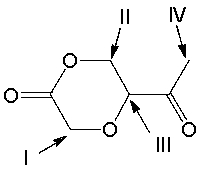
Correct Answer

verified
Correct Answer
verified
Short Answer
List the most common nuclei that are used in NMR.
Correct Answer

verified
Correct Answer
verified
Essay
A compound, with molecular formula C4H9Br, displays the following 1H NMR and 13C NMR spectra. Propose a structure for this compound.


Correct Answer

verified
Correct Answer
verified
Multiple Choice
Which of the following compounds is consistent with the 13C NMR spectrum shown below? 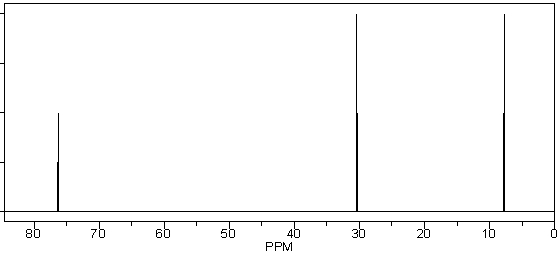

A) I
B) II
C) III
D) IV
E) V
G) A) and E)
Correct Answer

verified
Correct Answer
verified
Multiple Choice
Which of the following is not a common solvent used for acquiring a 1H NMR spectrum?
A) CDCl3
B) CCl4
C) CD3CN
D) CH3OH
E) D2O
G) B) and E)
Correct Answer

verified
Correct Answer
verified
Short Answer
How many signals would you expect in the 1H NMR spectrum of the following compound? 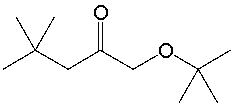
Correct Answer

verified
Correct Answer
verified
Multiple Choice
Presence of which of the following protons is confirmed by D2O exchange?
A) OH
B) NH2
C) CH
D) A & B
E) none of these
G) A) and D)
Correct Answer

verified
Correct Answer
verified
Multiple Choice
Which of the following compounds will display four signals in its 13C NMR spectrum?
A) 2,6-dimethylheptane
B) 2,4-dimethylheptane
C) 3,5-dimethylheptane
D) 4,4-dimethylheptane
E) 3,4-dimethylheptane
G) A) and E)
Correct Answer

verified
Correct Answer
verified
Multiple Choice
How many signals would you expect in the 1H NMR spectrum of HOCH2CH2CH2CH2OH?
A) 1
B) 2
C) 3
D) 4
E) 5
G) A) and B)
Correct Answer

verified
Correct Answer
verified
Multiple Choice
The 1H NMR spectrum of bromoethane shows a signal at 3.5 ppm when the spectrum is recorded using a 60 MHz spectrometer. Where do you expect to see the signal if a 300 MHz instrument is used instead?
A) 3.5 ppm
B) 7.5 ppm
C) 6.8 ppm
D) 5.8 ppm
E) none of these
G) A) and B)
Correct Answer

verified
Correct Answer
verified
Short Answer
NMR is an abbreviation for ____________ ____________ __________.
Correct Answer

verified
nuclear ma...View Answer
Show Answer
Correct Answer
verified
View Answer
Multiple Choice
Which of the following compounds will display only three singlets in its 1H NMR spectrum? 
A) I
B) II
C) III
D) IV
E) V
G) A) and C)
Correct Answer

verified
Correct Answer
verified
Multiple Choice
Which of the following compounds, with molecular formula C9H18O2, is consistent with the 1H NMR and 13C NMR spectra shown below? SHAPE \* MERGEFORMAT 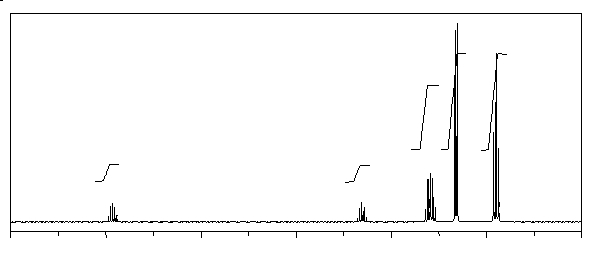

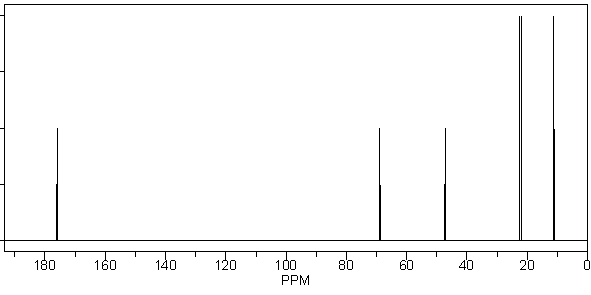

A) I
B) II
C) III
D) IV
E) None of these
G) A) and D)
Correct Answer

verified
Correct Answer
verified
Multiple Choice
Which of the indicated protons in the following compound would appear most upfield in the 1H NMR spectrum? 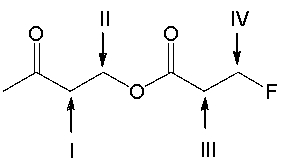
A) I
B) II
C) III
D) IV
E) I & III
G) C) and D)
Correct Answer

verified
Correct Answer
verified
Essay
Draw a structure, with a formula of C5H13N, which has an integration of 9H, 3H, 1H.
Correct Answer

verified
Correct Answer
verified
Multiple Choice
Which of the following carbon atoms will display the signal most downfield in the 13C NMR spectrum? 
A) I
B) II
C) III
D) IV
E) V
G) A) and C)
Correct Answer

verified
Correct Answer
verified
Multiple Choice
The off-resonance decoupling in 13C NMR allows for ________ splitting.
A) (12C-13C)
B) (12C-1H)
C) (13C-13C)
D) (13C-1H)
E) none of these
G) A) and C)
Correct Answer

verified
Correct Answer
verified
Multiple Choice
Which of the following compounds gives a 1H NMR spectrum consisting of only a singlet?
A) 1,1-dichloropropane
B) 1,3-dichloropropane
C) 1,2-dichloropropane
D) 2,2-dichloropropane
E) 1-chloropropane
G) B) and D)
Correct Answer

verified
Correct Answer
verified
Multiple Choice
Which of the following is true about the number of signals in a 1H NMR spectrum?
A) it indicates the number of neighboring protons
B) it indicates the electronic environment of neighboring protons
C) it indicates the number of different kinds of protons
D) it indicates the electronic environment of absorbing protons
E) it indicates the number of protons in the signal
G) A) and B)
Correct Answer

verified
Correct Answer
verified
Showing 21 - 40 of 140
Related Exams